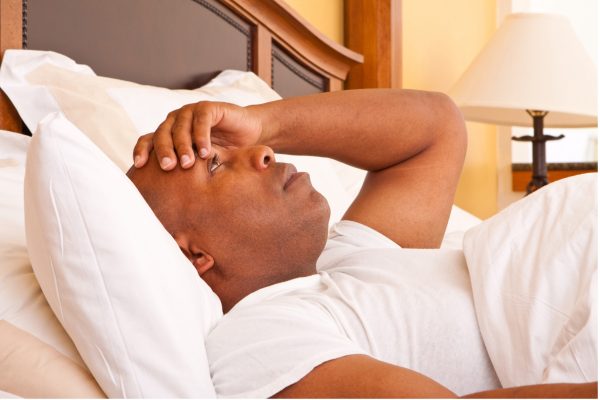Cannot Get To Sleep
Cannot Get To Sleep –
The Causes and Consequences :
Loss of sleep can have a significant impact on a person’s physical and mental health. One common sleep disorder that can cause a loss of sleep is sleep apnea. Sleep apnea is a condition in which a person’s breathing repeatedly stops and starts during sleep. One particularly strange aspect of this problem is the one that regularly prompts the question: “why can’t I sleep at night but can during the day? Here is a discussion of the possible causes and solutions to the sad refrain: “I cannot Get To Sleep”.
We all need sleeping problems solutions!
One possible cause of your problems is one that you’ll need to talk to your doctor about (if only to remove it from your hit-list), and that is sleep apnea.
Understanding Sleep Apnea
Sleep apnea is a sleep disorder that causes breathing to stop and start repeatedly during sleep. It can lead to poor sleep quality, daytime sleepiness, and other health problems. There are two main types of sleep apnea: obstructive sleep apnea (OSA) and central sleep apnea (CSA).
 Types of Sleep Apnea
Types of Sleep Apnea
Obstructive sleep apnea (OSA) is the most common type of sleep apnea. It occurs when the muscles in the back of the throat fail to keep the airway open, despite the effort to breathe. This can result in loud snoring, choking, or gasping for air during sleep.
Central sleep apnea (CSA) is less common than OSA and occurs when the brain fails to send the proper signals to the muscles that control breathing. This can cause a pause in breathing during sleep, followed by a gasp for air.
Causes of Sleep Apnea
There are several factors that can contribute to the development of sleep apnea. These include:
- Obesity or being overweight
- Smoking
- Alcohol consumption
- Chronic nasal congestion
- Family history of sleep apnea
- Certain medical conditions, such as diabetes, high blood pressure, and heart disease
People who experience symptoms of sleep apnea, such as loud snoring, gasping for air during sleep, or daytime sleepiness, should talk to their doctor. A sleep study may be recommended to diagnose the condition.
In conclusion, understanding sleep apnea is important for those who experience difficulty sleeping or poor sleep quality. With proper diagnosis and treatment, sleep apnea can be managed effectively, improving sleep quality and overall health.
Symptoms of Sleep Apnea
Sleep apnea is a sleep disorder that affects breathing during sleep. It can cause a person to stop breathing repeatedly during the night, leading to a variety of symptoms. Here are some common symptoms of sleep apnea:
Common Symptoms
- Loud snoring
- Gasping or choking during sleep
- Restless sleep
- Waking up with a dry mouth or sore throat
- Headaches in the morning
- Daytime sleepiness or fatigue
- Difficulty concentrating or remembering things
- Irritability or mood changes
If a person experiences these symptoms regularly, they may have sleep apnea and should see a doctor for diagnosis and treatment.
Symptoms in Children:
Why They Cannot Get To Sleep

Sleep apnea can also affect children, and the symptoms can be different than those in adults. Children with sleep apnea may exhibit the following symptoms:
- Snoring
- Restless sleep
- Night sweats
- Bedwetting
- Difficulty paying attention or hyperactivity during the day
- Slow growth or development
If a child exhibits these symptoms, they should see a pediatrician for evaluation.
In conclusion, sleep apnea can cause a range of symptoms that can affect a person’s quality of life. It is important to seek medical attention if these symptoms persist to determine if sleep apnea is the cause.
“I Cannot Get To Sleep”
Diagnosing Sleep Apnea
Diagnosing sleep apnea can be done through a variety of methods, including a sleep study or home sleep testing. It is important to note that only a medical professional can diagnose sleep apnea, and individuals should seek medical advice if they suspect they have the condition.
 Sleep Study
Sleep Study
A sleep study, also known as polysomnography, is a test that is conducted in a sleep lab. During the test, the individual is hooked up to equipment that monitors their heart, lung, and brain activity, as well as their breathing patterns. The test is typically conducted overnight and is supervised by a medical professional.
Polysomnography can help diagnose sleep apnea by measuring the frequency and duration of breathing disruptions during sleep. The results of the test can also help determine the severity of the condition.
Home Sleep Testing: learn the best position to sleep with sleep apnea
Home sleep testing is a more convenient and cost-effective option for diagnosing sleep apnea. The test involves wearing a small device that measures breathing patterns, oxygen levels, and heart rate while sleeping. The device is typically provided by a healthcare provider and can be used in the comfort of the individual’s own home.
Home sleep testing is generally recommended for individuals with suspected mild to moderate sleep apnea. However, it is important to note that the accuracy of the test may be lower than that of a sleep study conducted in a lab.
In conclusion, diagnosing sleep apnea requires medical attention and can be done through a sleep study or home sleep testing. It is important for individuals to seek medical advice if they suspect they have the condition.
Treatment Options for Sleep Apnea
Sleep apnea is a serious condition that requires treatment to prevent complications and improve quality of life. Treatment options for sleep apnea include lifestyle changes (best time to sleep), CPAP therapy, oral appliances, and surgery.
Lifestyle Changes
Lifestyle changes can help reduce the severity of sleep apnea symptoms. These changes include:
- Losing weight: Even a small amount of weight loss can help reduce constriction of the throat, which can improve sleep apnea symptoms.
- Music for sleeping, you’ll fall asleep fast.
- Exercise: Regular exercise can help ease the symptoms of obstructive sleep apnea even without weight loss.
- Avoiding alcohol and sedatives: Alcohol and sedatives can relax the muscles in the throat, which can worsen sleep apnea symptoms.
- Sleeping on your side: Most forms of obstructive sleep apnea are milder when you sleep on your side (usually sleeping on your left side).
CPAP Therapy
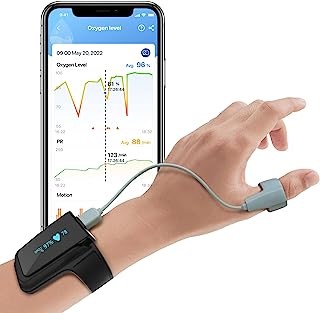
Continuous positive airway pressure (CPAP) therapy is a common treatment for moderate-to-severe sleep apnea. It consists of a mask worn over the mouth and nose during sleep. A machine delivers a continuous flow of air to keep the airway open.
CPAP therapy is effective for most people with sleep apnea, but it can take some time to get used to wearing the mask. Some people may experience side effects, such as dry mouth or nasal congestion.
Oral Appliances
Oral appliances are devices that are worn in the mouth to help keep the airway open during sleep. They are typically used for mild-to-moderate sleep apnea.
Oral appliances work by repositioning the jaw and tongue to keep the airway open. They are custom-made by a dentist or orthodontist and may take some time to get used to.
Surgery
Surgery may be an option for people with severe sleep apnea who do not respond to other treatments. There are several types of surgery for sleep apnea, including:
- Uvulopalatopharyngoplasty (UPPP): A procedure that removes excess tissue from the throat to widen the airway.
- Maxillomandibular advancement (MMA): A procedure that moves the upper and lower jaws forward to enlarge the airway.
- Tracheostomy: A procedure that creates a hole in the neck to bypass the blocked airway.
Surgery for sleep apnea is usually only recommended after other treatments have failed. It is important to discuss the risks and benefits of surgery with your doctor.
Risks of Untreated Sleep Apnea
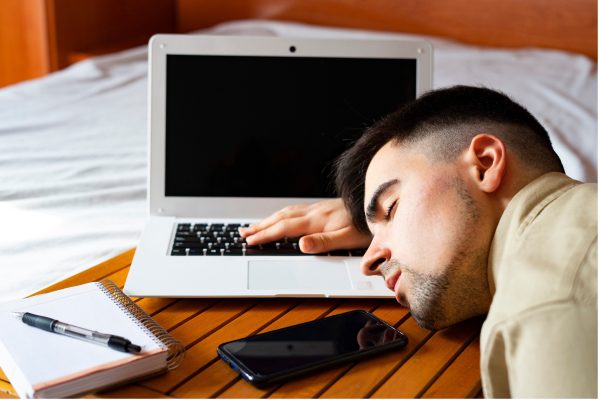
Untreated sleep apnea can lead to serious health risks, including heart disease, high blood pressure, type 2 diabetes, stroke, and reduced life expectancy.
Heart Disease
Sleep apnea can increase the risk of developing heart disease. When breathing is interrupted during sleep, the body’s oxygen levels drop, which can cause the heart to work harder. Over time, this can lead to an enlarged heart, heart failure, or even a heart attack.
High Blood Pressure
Untreated sleep apnea can also cause high blood pressure. When the body is deprived of oxygen during sleep, the blood vessels constrict, causing an increase in blood pressure. This can put a strain on the heart and increase the risk of heart disease and stroke.
Type 2 Diabetes
Sleep apnea is also linked to type 2 diabetes. The body’s insulin sensitivity decreases when sleep is disrupted, which can lead to high blood sugar levels. Over time, this can increase the risk of developing type 2 diabetes.
Stroke
People with untreated sleep apnea are at a higher risk of having a stroke. When breathing is interrupted during sleep, the body’s oxygen levels drop, which can cause damage to the blood vessels in the brain. This can increase the risk of a stroke.
Untreated Sleep Apnea – Life Expectancy
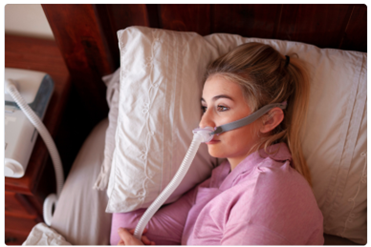
Untreated sleep apnea can reduce life expectancy. People with severe sleep apnea are at a higher risk of dying prematurely from heart disease or stroke. In addition, sleep apnea can lead to accidents and injuries due to excessive daytime sleepiness.
It is important to seek treatment for sleep apnea to reduce the risk of these serious health complications. Treatment options include lifestyle changes, such as losing weight and quitting smoking, and the use of continuous positive airway pressure (CPAP) machines to keep the airways open during sleep.
Conclusion
Sleep apnea is a serious condition that can have significant health consequences if left untreated. It is important for individuals who suspect they may have sleep apnea to seek medical attention and undergo a sleep study to receive a proper diagnosis.
Treatment options for sleep apnea include lifestyle changes, such as weight loss and exercise, as well as medical interventions such as continuous positive airway pressure (CPAP) machines and oral appliances. In some cases, surgery may be necessary to correct structural abnormalities that contribute to sleep apnea.
While the symptoms of sleep apnea can be disruptive to daily life, the good news is that effective treatment is available. By working closely with a healthcare provider, individuals with sleep apnea can take steps to improve their quality of life and reduce their risk of developing serious health complications.
I Cannot Get To Sleep:
Frequently Asked Questions
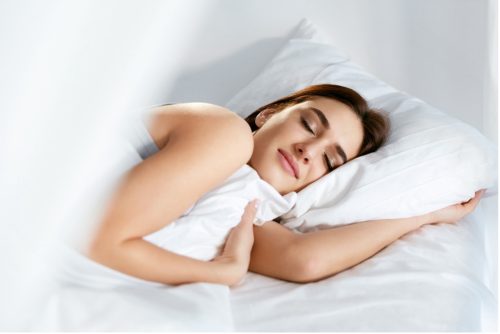
What are the symptoms of sleep apnea?
Sleep apnea can cause a range of symptoms, including loud snoring, daytime fatigue, difficulty concentrating, irritability, and headaches. People with sleep apnea may also experience pauses in breathing during sleep, gasping or choking during sleep, and frequent awakenings throughout the night.
How is sleep apnea diagnosed?
A doctor may diagnose sleep apnea through a sleep study, which involves monitoring a person’s breathing, heart rate, and other vital signs while they sleep. The doctor may also ask about the person’s symptoms and medical history, and perform a physical exam.
What are some treatments for sleep apnea?
Treatment for sleep apnea may include lifestyle changes, such as losing weight or quitting smoking, as well as using a continuous positive airway pressure (CPAP) machine to keep the airway open during sleep. Other treatment options may include surgery or the use of oral appliances to help keep the airway open.
Can sleep apnea lead to other health problems?
Untreated sleep apnea can increase the risk of developing other health problems, including high blood pressure, heart disease, stroke, and diabetes. It can also worsen existing health conditions, such as depression and anxiety.
What lifestyle changes can help manage sleep apnea?
Lifestyle changes that may help manage sleep apnea include losing weight, quitting smoking, avoiding alcohol and sedatives before bedtime, and sleeping on one’s side rather than on the back. Regular exercise and maintaining a regular sleep schedule may also be helpful.
What are the risks of leaving sleep apnea untreated?
Leaving sleep apnea untreated can lead to a wide range of health problems, including high blood pressure, heart disease, stroke, and diabetes. It can also increase the risk of accidents and injuries due to daytime fatigue and drowsiness. In addition, sleep apnea can negatively impact a person’s quality of life, causing problems with work, relationships, and other activities.

